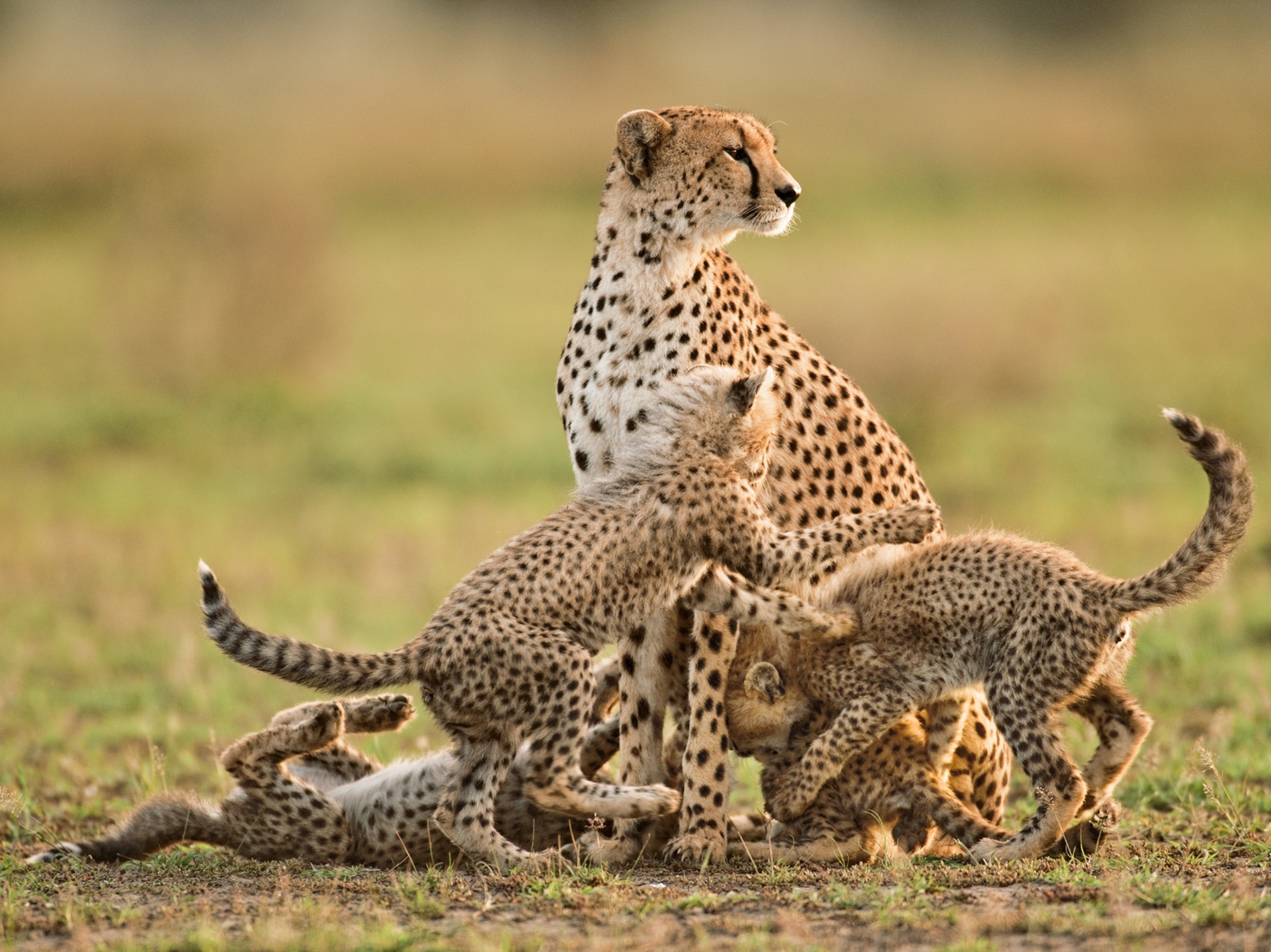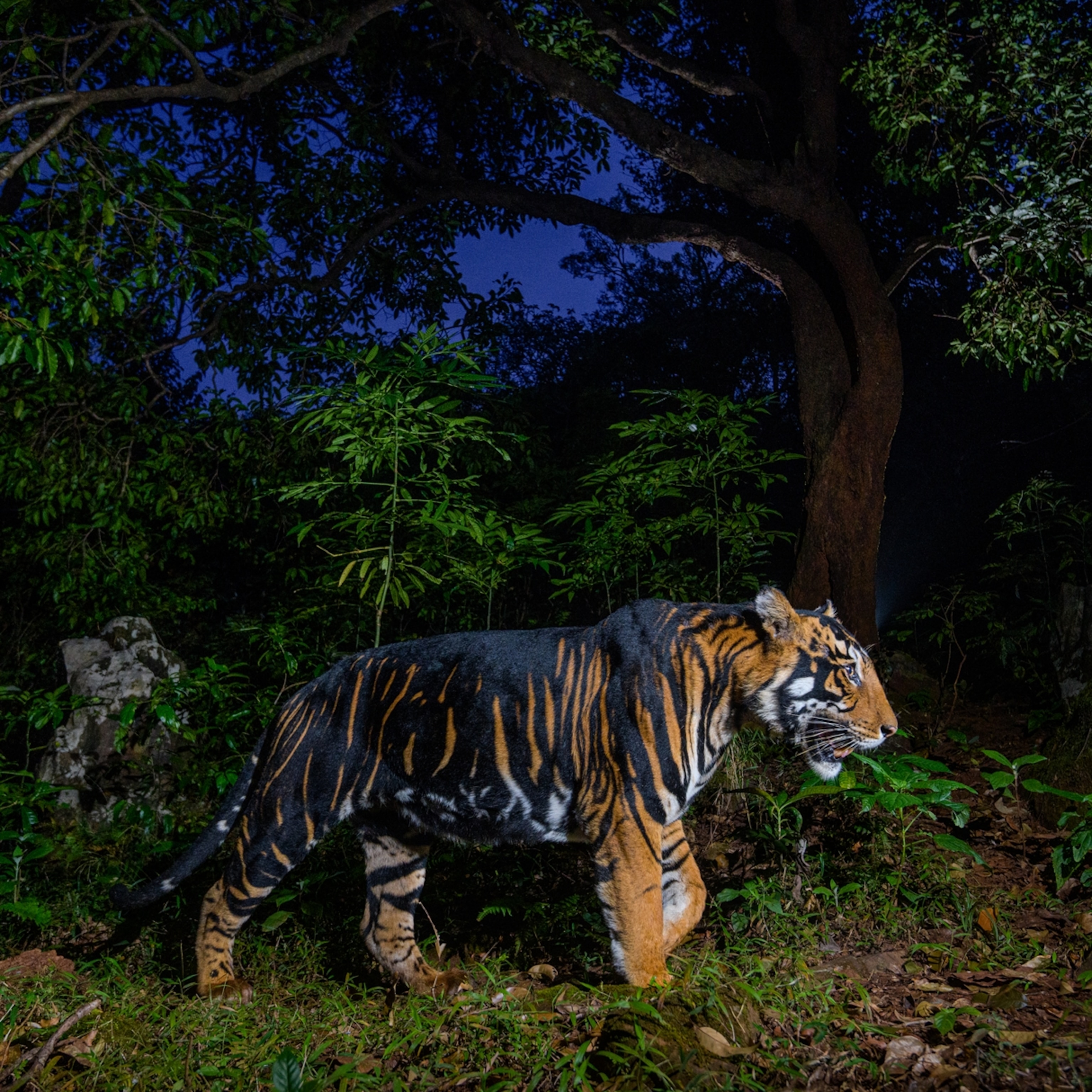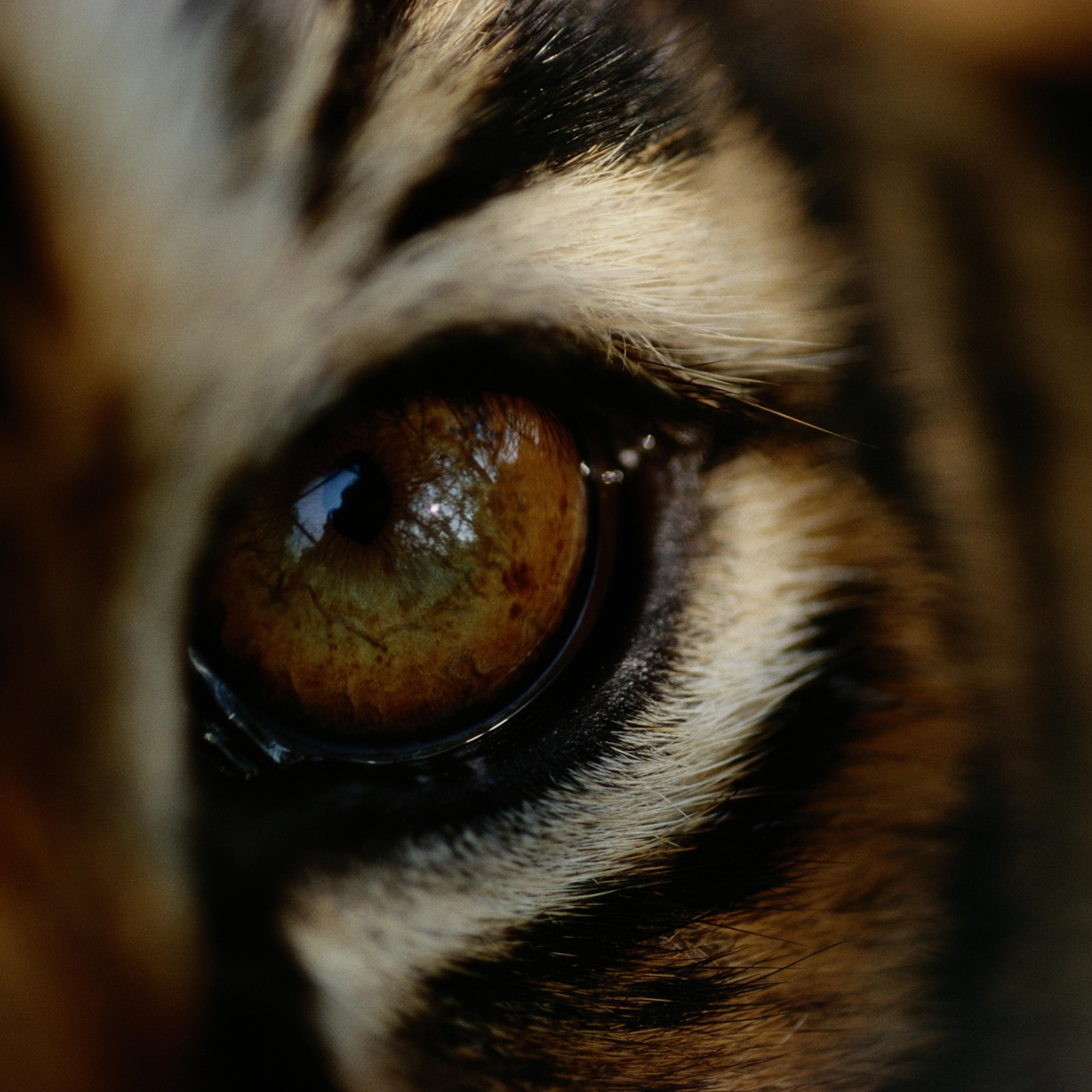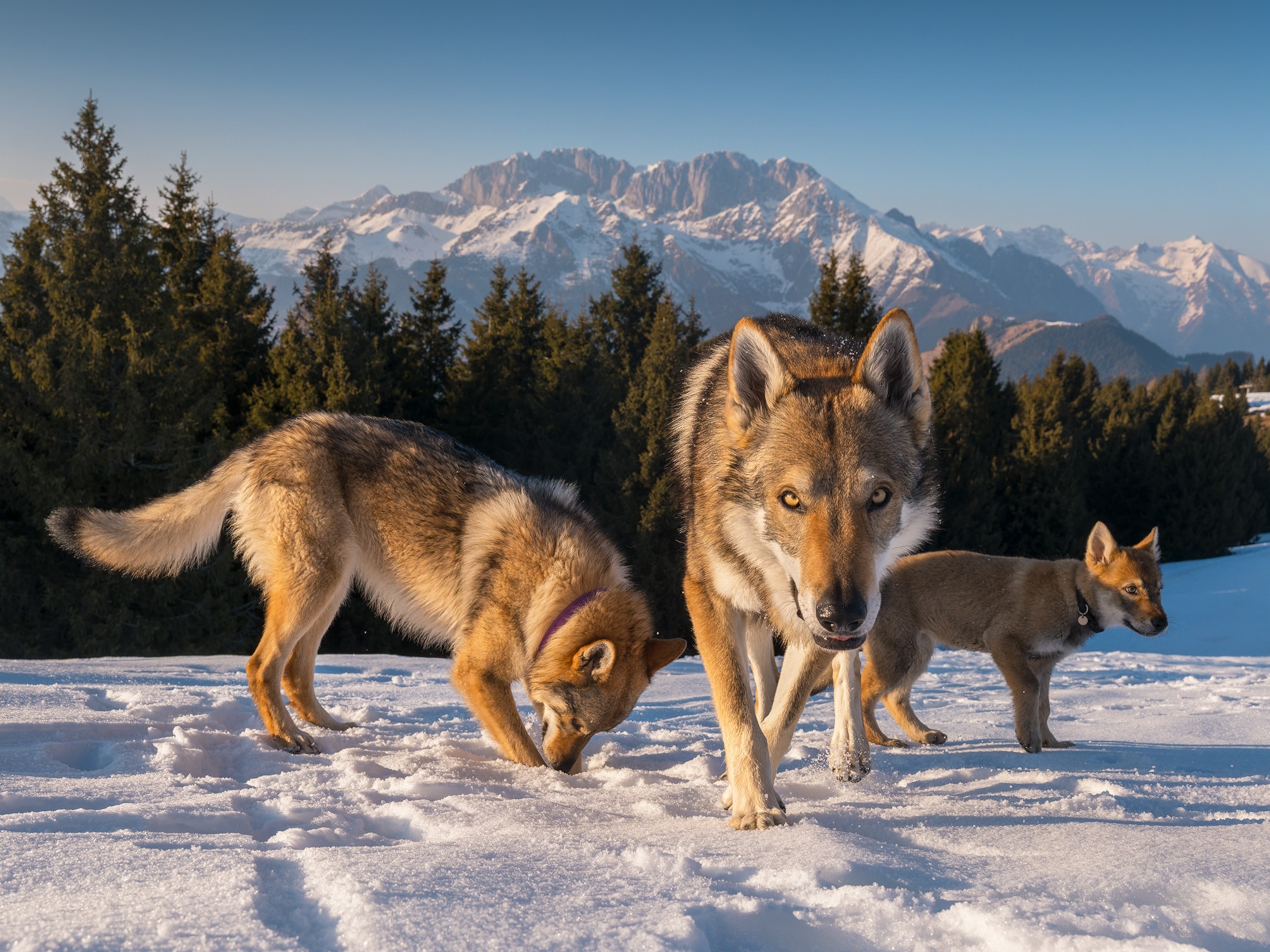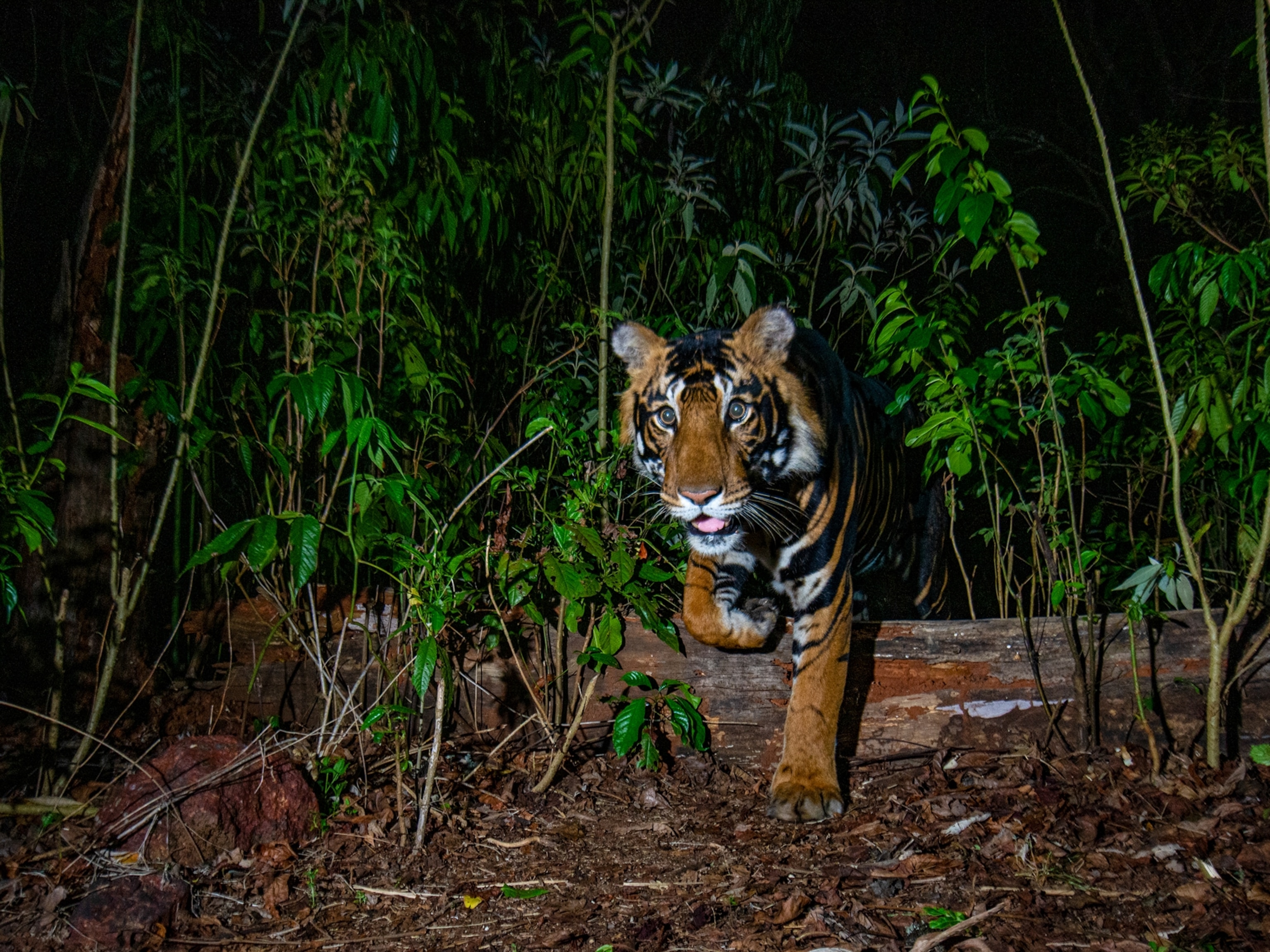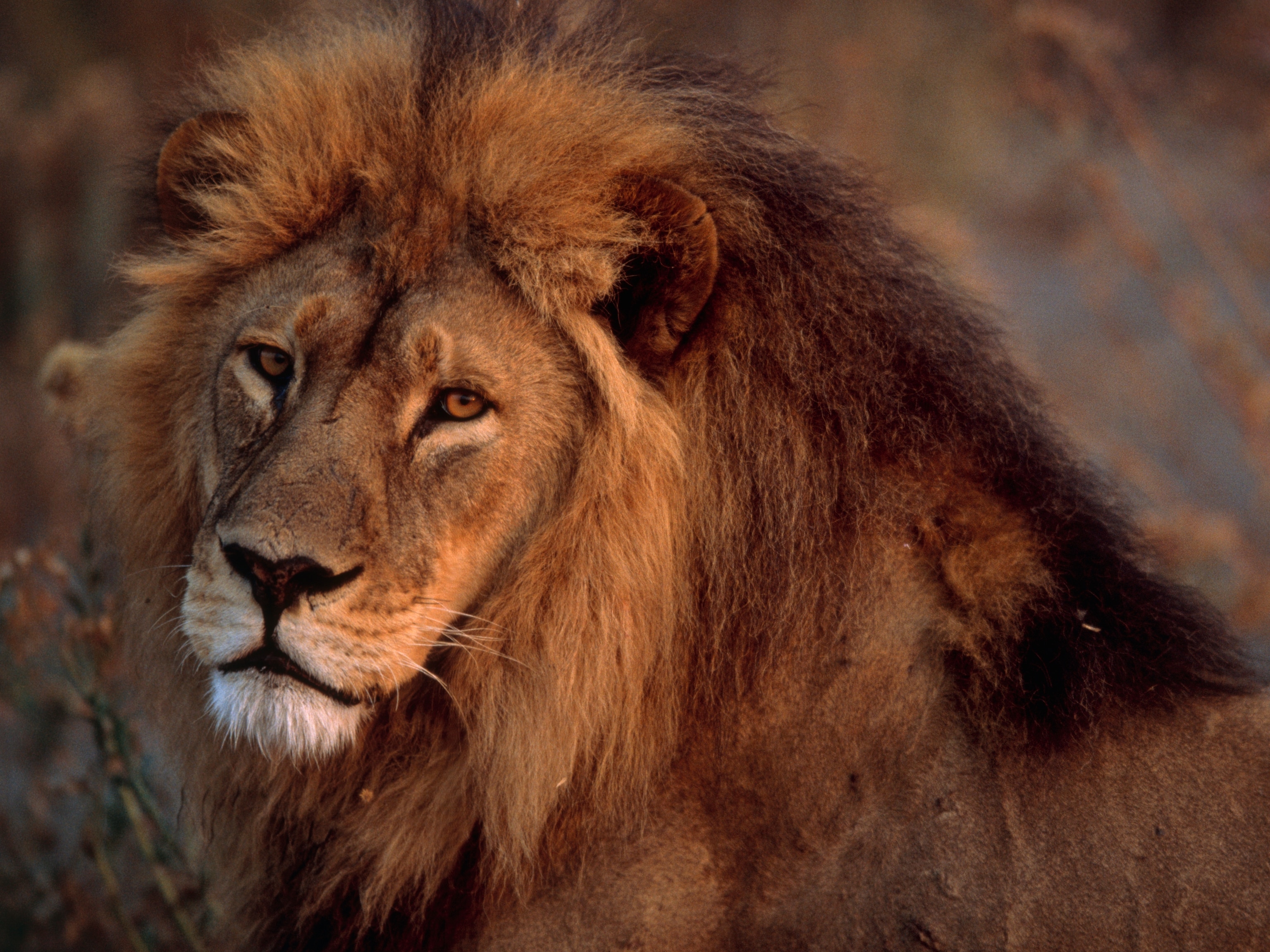Cheetahs on the Edge
Most vulnerable of the world’s big cats, cheetahs are also one of its shrewdest survivors.
Anticipation ripples through the crowd. Fingers tighten around binoculars. Camera lenses snap into focus. No fewer than 11 canopied safari buses, bright with tourists and bristling with long lenses, huddle near a solitary acacia tree in Tanzania’s Serengeti National Park. For the past half hour a mother cheetah named Etta has been sitting in the shade with her four young cubs, eyeing a herd of Thomson’s gazelles that drifted into view on a nearby rise. Now she’s up and moving, sidling toward the herd with a studied nonchalance that fools no one, least of all the gazelles, which are staring nervously in her direction.
Suddenly one of the guides shouts, as the gazelles break and run and Etta launches into an explosive sprint. The sleek cat is too fast for the eye to follow, blurring through the grass like a bullet. The drama is over in seconds, ending with a puff of dust and a stranglehold on a luckless young gazelle. As Etta drags the carcass back to her cubs, they emerge from the scrub eager to tuck into the feast. The safari buses are only seconds behind, the drivers jockeying to get the best camera angles for their customers.
Cheetahs have come to occupy a curious place in the human imagination. Beautiful and exotic, sports car fast and famously docile, they are as much media stars as denizens of the wild, darlings of filmmakers and advertisers the world over. Tap “cheetah” and “images” into your computer’s search bar, and more than 20 million results pop up—from fashion shoots to flashy car ads to photos of pet cheetahs riding in the backseats of Mercedes convertibles.
All this pop culture presence might create the impression that cheetahs are as secure in nature as they are in the popular imagination. They are not. In fact, cheetahs are the most vulnerable of the world’s big cats, surprisingly rare and growing steadily rarer. A few centuries ago cheetahs roamed from the Indian subcontinent to the shores of the Red Sea and throughout much of Africa. As fleet of foot as they are, though, they couldn’t outrun the long reach of humanity. Today the Asiatic cheetah, the elegant subspecies that once graced the royal courts of India, Persia, and Arabia, is all but extinct. In Africa cheetah numbers plummeted by more than 90 percent during the course of the 20th century, as farmers, ranchers, and herdsmen crowded the cats out of their habitat, hunters shot them for sport, and poachers captured cubs for the lucrative trade in exotic pets. In all, fewer than 10,000 cheetahs survive in the wild today.
Even within Africa’s great game parks, cheetahs are under heavy pressure. Shy and delicately built, the only big cats that cannot roar, they are bullied into the margins by lions, which are far stronger both in body and number. Consider Tanzania’s Serengeti National Park and the adjoining Masai Mara National Reserve in Kenya. Taken together the two parks are home to more than 3,000 lions, an estimated 1,000 leopards, and a mere 300 cheetahs. And despite their celebrity status, cheetahs lose out to lions in the tourism stakes as well. “Cheetahs tend to be something people look for on their second safari,” says guide Eliyahu Eliyahu. “The first time around is all about seeing lions. The trouble is, where you have a big lion population, you will never have many cheetahs.”
If cheetahs seem a breed apart, it’s because they are. Not only are they a separate species from the other great cats, but they belong to a separate genus as well, a genus with just one member: themselves. Their genus name, Acinonyx, comes from Greek words for “thorn” and “claw” and refers to the cheetah’s curious semi-retractable claw, a feature they share with no other cat. Unlike lions and leopards, whose fully retractable claws are tools designed for tearing flesh and climbing trees, cheetahs have claws that are more like the spikes on a sprinter’s track shoe and serve a similar function: solid grip and quick acceleration.
Everything about a cheetah is designed for speed—pure, raw, explosive speed. Put a cheetah and a Lamborghini side by side on a freeway, and it will be an even-money bet which will smash the speed limit first. Both can do zero to 60 in under three seconds, but the cheetah can crack 45 miles an hour in the first couple of strides. And what strides. Thanks to its flexible spine and long, fluid legs, a cheetah can gobble up turf in bounds that exceed 25 feet. An elite human athlete who could leap that far even once, after a good run, would be well on his or her way to qualifying for the Olympic Games. A cheetah sprinting at top speed might be doing that up to four times a second.
Such superhuman abilities lent cheetahs an otherworldly aura in ancient times. Egyptians were the first people to tame them as pets and immortalize them in images on tombs and temples, nearly 4,000 years ago. In India, Iran, and Arabia, coursing with cheetahs—or “hunting leopards,” as they were known—became an immensely popular sport among the aristocracy. In the courts of the Mogul emperors, cheetahs became a kind of motif, celebrated in paintings and tapestries, folklore and verse. Favorite cheetahs were adorned with jeweled collars and featured prominently in royal processions.
Cheetahs remain highly fashionable in Saudi Arabia and the Gulf states, where a cub can fetch upwards of $10,000. “A rich, young man buys himself a cheetah to go with his sports car,” says Mordecai Ogada, a Kenyan wildlife biologist who has studied cheetah-human relationships and wildlife trafficking. “It’s typically a new-money thing nowadays.”
In places such as the United Arab Emirates cheetahs occupy a kind of legal limbo. “The importation is clandestine,” says Ogada, “but once there, the trade is open. Trafficked cheetahs can easily be ‘laundered’ and made to appear as though they were legally bred in captivity. It’s difficult to determine the source of cubs unless you do genetic analysis and identify them as members of a subspecies that’s endemic to a particular area.”
How great a toll trafficking is taking on the world’s dwindling cheetah population is anyone’s guess, but evidence suggests that trade in wild cheetah cubs is a large-scale enterprise. Even a cursory trawl of the Internet turns up plenty of cubs being offered for sale by “breeders” in places like Dubai. Several cheetah smugglers were arrested last year in Tanzania and Kenya, and there were rumors of cheetah cubs being offered for sale as far afield as Cameroon.
“I suspect the problem is bigger than we imagine,” says Yeneneh Teka, head of Ethiopia’s Wildlife Development and Protection Directorate. “There is a great deal of money involved, and like the people who are smuggling drugs and guns, those who smuggle wildlife have well-established networks.”
Last year Ethiopian authorities cracked down on wildlife smuggling and instituted a training program for border guards and customs officials. The stepped-up enforcement paid off when officials intercepted a consignment of cheetah cubs as they were being smuggled into Somalia.
“While the border guards were examining the truck’s paperwork, they heard scratching sounds coming from a jerry can that was supposed to be full of petrol,” Teka says. “When they opened it up, they found five tiny cheetah cubs in very poor condition.” One of the cubs died. The other four, after weeks of veterinary care, were taken to a wildlife sanctuary operated by the Born Free Foundation an hour north of Addis Ababa, where they will spend the rest of their lives. Although it’s a happy ending for the four survivors, it’s a net loss for the species.
“They’ll never be able to return to the wild,” says Ogada. “Even if you could teach them to hunt, humans can’t teach cubs how to recognize and avoid predators such as lions and hyenas.” And although some cheetahs have been successfully rewilded on large, fenced reserves in South Africa, the wide-open grasslands are a far more dangerous place to grow up. Orphaned cubs “wouldn’t stand a chance in a place like the Serengeti,” says Ogada.
Even mother cheetahs find it difficult to raise cubs in the wild, where mortality among cubs can run as high as 95 percent. The great majority of cubs may never make it out of the den in which they’re born. They’re killed in raids by lions or hyenas, or they die of exposure, or they’re abandoned by mothers that aren’t skillful enough hunters to support them. Indeed, many female cheetahs go their entire lives without raising a single cub to maturity.
There are a rare few, however, that somehow manage to beat the odds and enjoy astonishing success in raising cubs, some even fostering the offspring of other females. Superb hunters and wise in the ways of the bush, these supermoms manage to make a kill nearly every day while keeping their brood safe on the wide-open stage of the African grasslands, beneath the very noses of lions and hyenas. One such supermom, a seven-year-old named Eleanor, is known to have mothered at least 10 percent of all the adult cheetahs in the southern Serengeti.
“I’m not aware of any other carnivore whose survival relies so heavily on the success of so few females,” says Sarah Durant of the Zoological Society of London. Durant directs the Serengeti Cheetah Project, one of the world’s longest running carnivore studies. Now in its 38th year, the project has chronicled the lives and maternal pedigrees of generations of the Serengeti’s cheetahs. It is hot, dusty work, involving long hours bouncing over the grasslands in hard-bitten Land Rovers seeking out the most elusive of Africa’s great cats. It was Durant’s painstaking research that revealed the vital importance of supermoms.
Though the matriarchal lines of the Serengeti’s cheetah population are now well documented, paternity is another matter. Wildlife biologist Helen O’Neill waits patiently in her Land Rover a short distance from where three cheetah brothers—Mocha, Latte, and Espresso, known collectively as the Coffee Boys—lie sprawled in the shade of a ballanite tree. O’Neill is on what is delicately referred to as “poop patrol,” collecting feces dropped by specific, identifiable cheetahs. Scientists at the Zoological Society of London are able to extract DNA samples and hope to fill in the paternal side of the Serengeti’s family trees.
Analysis so far suggests that cheetah females are far more promiscuous than anyone suspected: In as many as half their litters, the cubs have different fathers. “We suspect this kind of multiple mating could have genetic benefits in an uncertain environment,” says Durant. “Think of it as bet hedging by the cheetah mothers to try to ensure that some of their progeny survive.”
A world away from the sunlit grasslands of the Serengeti, late on a cold, clear winter’s afternoon, a lone male cheetah picks his way along a snow-dusted ridgeline. He pauses briefly to scent mark a tamarisk tree, then slinks out of view of the remotely operated video camera that has been recording his passage.
The concealed camera is one of 80 camera traps that have been deployed around the Dasht-e Kavir, a remote region in Iran’s mountainous central plateau, in the hopes of glimpsing one of the world’s rarest and most elusive big cats: the Asiatic cheetah.
“It’s like a dream come true when we get something like this,” says Iranian wildlife biologist Houman Jowkar of the 27 seconds of footage. Jowkar is with the Conservation of the Asiatic Cheetah Project, which was set up by Iran’s Department of Environment in 2001 in a bid to save the last remaining population of these endangered cheetahs. “These cats are incredibly rare,” says Jowkar. “We have game wardens who have lived and worked in these mountains for years but have never seen a live cheetah.”
The camera-trap program has helped Iranian scientists determine roughly how many cheetahs are left and where they live—vital information for developing a conservation strategy. “We’re lucky these beautiful cats are spotted,” Jowkar says. “By using their unique coat patterns, we can identify them individually and work out their population and distribution.”
All the same, saving the Asiatic cheetah will be a tall order. Its downfall traces back to the glory days of the Mogul Empire, when hunting with cheetahs became all the rage. One Mogul emperor is said to have collected more than 9,000 cheetahs during his 49-year reign.
Compare then and now. In ten years of setting out scores of cameras, Iranian researchers have so far managed to obtain a mere 192 fleeting images. Those images document 76 gaunt individuals, pretty much all that remains of a noble subspecies of cheetah that once roamed throughout much of Asia. Today’s survivors eke out a precarious existence. Stalking antelope and mountain sheep on steep, stony slopes, they compete with wolves and even humans, for whom gazelles and sheep are also a handy food source.
“They are living on a knife edge, at the very limit of what is ecologically possible,” says Luke Hunter, president of Panthera, an international conservation group dedicated to preserving big cats, and a collaborator on the Iranian cheetah project. “What’s intriguing, though, is that these cheetahs have not been pushed into these mountains recently. They’ve been here for thousands of years. People don’t realize how tough and versatile cheetahs really are.”
Indeed they are. Despite their vulnerability, cheetahs are one of the world’s hardiest and shrewdest survivors, enduring both the bitter winters of the Iranian steppes and the scorching heat of the Sahara wadis. “They are not just fast,” says Algerian wildlife biologist Farid Belbachir, who has been setting camera traps in Algeria’s Ahaggar Mountains, trying to capture images of the critically endangered Saharan cheetah. “They understand the landscape. They’ve figured out how to use the narrow parts of the wadis to launch their attacks, to give their prey less opportunity to escape.”
Back in Serengeti National Park, it’s now in the shank of the afternoon, with the hot taste of dust in the air and thunderheads tumbling and billowing along the horizon. For the past hour or so Etta has been creeping up on a big male gazelle, drawing to within 40 yards of him, while he has remained oblivious to her presence.
“It’s too early to tell if Etta is going to turn out to be a supermum,” Durant says. “This is only her first litter. But the fact that she has brought four cubs out of the den and has raised them this far is an encouraging sign.”
The gazelle is big and healthy, with a lot of meat on him. Etta takes another couple of quick, furtive steps forward, then crouches and waits, looking like a sprinter on the starting blocks, poised and ready for the gun.
A tense minute crawls by, then another. Suddenly, and seemingly for no reason at all, Etta just stands up and strolls away. Something doesn’t feel right to her—a whiff of hyena on the breeze or maybe the scent of lions. Whatever it is, to a mother of four young cubs alone on the Serengeti, one fat gazelle isn’t worth the risk. She beckons to her cubs to come along, and together they trot off into the violet haze.



